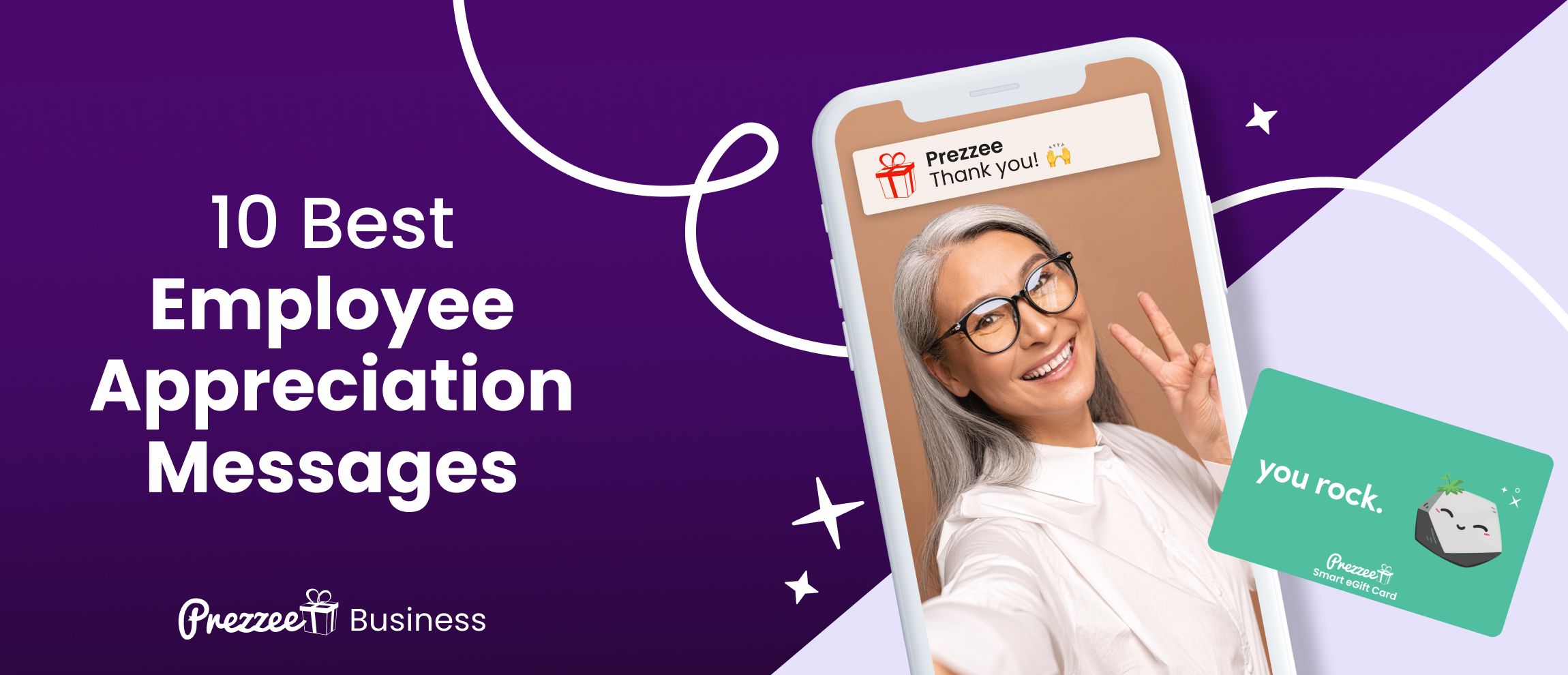The Importance of Employee Recognition



The Importance of Employee Recognition
Open your calendar and save this date: March 3rd. It’s in big red font, record “National Employee Appreciation Day.” On March 4th, your team is happy; they loved the Employee Appreciation Day Celebration you put together.
You’re done with your employee appreciation strategy for the year, right? Not quite.
While observing this occasion to make your employees feel special is a start, one day out of the year is not enough. Great business leaders understand that efforts made to build an employee recognition strategy are just as important as the job training itself.
You can’t achieve great work without effective employee recognition. Why? Because the two go hand-in-hand.
The good news is that you don’t need any fancy employee recognition software to make your team feel seen and heard. The more that you verbalize positive feedback, the more it shows you’re paying attention — which results in more trust earned from your team.
According to Forbes, a study showed that nearly 90% of employees who were shown recognition from their boss felt higher levels of trust in that manager. However, only 48% showed signs of trusting the authoritative figures of those who did not receive recognition.
Ready to be seen as a better people leader, increase business results, and make your team feel appreciated? Keep reading to find out how simple it is to accomplish all three with how far a little recognition can go.
Recognition 101
Recognition is a word that can often be thrown around a workplace without many guardrails. So why is it so good for business, and how should it be demonstrated? Keep reading for ways to better understand why the practice of highlighting teams and individual employees can not only help your bottom line but your company’s reputation as a great place to work:
What Exactly Is Recognition?
Recognition is defined as “the acknowledgment of something's existence or validity.” This might sound like a simple and easy act — because it is! All you need is some organization (a simple calendar to start) and a little creativity.
Recognition is a cause-and-effect occasion; it’s given when earned and deserved. Suppose recognition is given without proper thought (for example, credit was given to the wrong person, or a recently highlighted employee has been causing negative issues in the work environment). In that case, it can be perceived as a meaningless gesture.
The Benefits of Employee Recognition
REPLACE WITH IMAGE
Among many more examples, the top reasons to make recognition a priority:
- Positive business outcomes
- Employee retention (decreased employee turnover and creates a positive environment for top performers)
- The encouragement of core values
Let’s take employee retention as an example, as it can be one of the most cost-saving areas for your company. Glassdoor’s Employee Appreciation Survey showed that 53% of employees reported appreciation from their boss motivated them to stay longer at their company. What might surprise you is that from that same group, 68% of respondents said their manager was already actively displaying a sufficient amount of appreciation.
This proves what we learned before: appreciation can’t be reserved for merely one holiday out of the year. Keep it continuous — in this case, more is more!
Informal vs. Formal Recognition: What’s the Difference?
The guidelines around formal recognition are pre-established and unique to every organization. Employees should be aware of what their clear, attainable goals are. They should also be aware of what prize or financial reward is attached, if applicable.
On the other hand, informal recognition is something that is usually spontaneous and immediate yet meaningful. Informal recognition is typically low-cost, which is welcome news since frequent recognition maintains a healthy level of employee morale.
Recognition by Roles
REPLACE WITH IMAGE
Top-Down Recognition
Top-down praise is recognition from an employee’s supervisor, manager, etc. Acknowledgment from a direct boss can be beneficial because of the power that person has in the advancement of their employee’s careers. A "job well done” can foster confidence in the employee that the continuation of their hard work will lead to a promotion or pay raise.
Peer-to-Peer Recognition
Positive feedback given from workers on the same level cultivates a positive team relationship.
Employee surveys have shown to be more effective in cultivating positive team relationships and teamwork: Teammates have special access to the behind-the-scenes of what actually went into the success of a project or task. However, this doesn’t mean you can take your foot off the pedal as the leader — recognition from both roles is needed for success.
What Are the Main Types of Employee Recognition?
Now that we’ve covered the who, the what, and the why of recognition, let’s review how to integrate these practices.
Here are the four types of recognition:
- Public Recognition
It’s a fantastic feeling when your boss is excited about your role on the team. When a leader is proud to have you on their crew, this sends the message to the rest of the company that your hard work is valued.
Public recognition can include praising a job well done over a team huddle, a shout-out via a company-wide email, or even a public acknowledgment with an employee feature on your company’s LinkedIn page.
- Private Recognition
Private recognition is precisely what it sounds like: praise that is communicated only between you and your employee. This can be done with a thank-you email or a direct slack message (bonus: you can send personalized eGift cards from Prezze to sweeten the note!).
Keep track of personal goals your employee has shared with you and keep tabs on how they tackle them. They will be delighted that you are invested in their progress.
- Promotion
While the gradual display of accomplishment should result in a promotion, these types of occasions can't be done all the time. This especially doesn’t serve us well when frequent recognition is essential.
Instead of viewing promotions as a formal change in title, you can get creative with what they could look like. Perhaps recognize your employee with a display of trust with a different scope of work or a new client. Your confidence in them will not only prepare them for a future new role but will be personally meaningful.
- Employee Reward
Financial rewards can be the most powerful form of motivation. When you think of monetary rewards in the traditional workspace, oftentimes, things such as bonuses and salary raises come to mind, but it doesn’t have to be that formal.
Consider gifting digital gift cards. Digital gift cards are a budget-friendly incentive tool (you can control the pricing) for employees to reach personal goals. Plus, since Prezzee Business has over 370 options (and growing) of top retailers, you can pick one that you think would have the biggest impact.
For example, you could reward that employee who loves Disneyland with a Disney Digital gift card. Or, for an employee who loves reading, the Barnes and Noble eGift card would be perfect!
Reasons for Employee Recognition
There are very few rules when it comes to what you find worthy of a shout-out. Examples can branch from business wins to fun milestones. We listed some of our favorites below.
Business and Team Wins
The following examples of hard work could merit public praise.
- Accomplished an annual, monthly, or weekly goal
- Created a new work process that increased efficiency
- Acquired a new customer or recruited top talent
- Found a way to cut company or project costs that contributed to the company’s bottom-line
- Went the extra mile by assisting another department
- Overcame an obstacle
- Completed extra work that was (or was not) asked of them
- Demonstrated a positive way to deal with conflict
Important Milestones
REPLACE WITH IMAGE
Business leaders don’t ALWAYS have to reserve the act of recognizing a team or employee for overcoming obstacles or going above and beyond work. An easy layup for making your team feel appreciated can occur by simply taking a peek at your calendar.
Celebrating milestones can have a positive impact on your team.
Examples of recognition by milestones and how to celebrate include:
Onboarding
Onboardings set the stage for the rest of the employee’s tenure. Welcome the newest hire to the team with everything they need to succeed. A well-curated welcome package includes clear instructions, a personal note of congratulations, and company-branded swag. For WFH employees, providing an eGift card to furnish their home office is a thoughtful and much-needed gesture.
Birthdays
Find out their favorite tasty treat (and dietary restrictions!) ahead of time to plan a celebration at lunch. If the birthday guest of honor is remote, send a DoorDash or Ubereats eGift card.
Bonus: pass a memo around to teammates to change their Zoom or Teams background to a picture of the birthday employee before a group call. They will feel the love — and certainly share a laugh.
Work Anniversaries
A top-notch employee recognition program will never let a work anniversary pass by uncelebrated.
Unleash your creativity! One fun idea would be to follow the traditional wedding anniversary guide of gifts to celebrate each year.
For example, the first year at the company is honored with a gift of paper; the fifth is wood-related; the tenth is tin or aluminum, etc. You can symbolize this with an eGift card to a related retailer for simplification.
Give Milestones Meaning… Automatically
An easy way to emphasize an employee’s value is by pairing the milestone occasion with a recent example of the employee’s good work.
Tip: Don’t forget to record the above on your Microsoft Office calendar or whatever you reference every day. Depending on the size of your team, chances are that each week you may have something easy to celebrate.
Bonus Methods of Recognizing Employees
Don’t feel like you can only be traditional in the way you show appreciation for your team. Think outside the box: What can I do to earn the trust of those I lead? The answer may be simpler than you think. In the form of changing the ways you show up to meetings — and celebrating (yes, celebrate) failures.
Daily Signals of Recognition- Active Participation in Meetings
Recognizing your employees' hard work should be naturally integrated into your normal workday flow. It doesn’t always have to be tied to metrics but can be demonstrated by the way you interact with your team on a day-to-day basis.
The below tips ensure you’re building a culture of recognition:
- Listen
Make sure you are really listening to what your employee is communicating to you during a meeting or one-on-one touch base. Close your laptop, put your phone away, and make eye contact. Studies have shown repeating back major details or main points of what you’ve just heard can improve memory retention.
- Give Positive Feedback in Real-Time
Positive feedback is one of the easiest and most underrated gifts a leader can give their team. When you see an employee do something helpful, kind, or clever, don’t let the moment pass by. Whether they refill the breakroom coffee pot or close a big deal, give them a “Job well done” ASAP.
- Ask How You Can Help Lead Better
It’s easy (and at times automatic) to pack up your things and quickly head to the next meeting after a team discussion. Next time, try to slow down and make sure your employees have what they need for their next steps.
Offer to be a resource where you can and ask if there are any ways you can make their life easier or take a task off their plate. Showing humility and care is what marks someone as a worthy leader.
Recognize Failures
Yes. You read that correctly.
Recognizing failures promotes company values, such as taking risks to constantly evolve. For instance, Executive Coach Joel Garfinkle celebrates failures as learning opportunities with a “Heroic Failure” award given to employees who took an ambitious risk that didn’t result in oh-so-great outcomes.
Coach Joel believes that bestowing this award shifts company culture from fearing the feeling of failure as something that is shameful to wearing the badge of a risk-taker.
While you don’t need to follow the same route, taking a moment to celebrate when someone takes a leap instead of a hop can have ripple effects that propel your business to the front page of Forbes.
Prezzee Is Here To Help With Employee Recognition Ideas
At the end of the day, don’t overthink it. If you put effort towards showing up and bringing purpose and encouragement through appreciation each day, your team will notice. Remember: if you stay continuous with your signals of appreciation and keep them genuine, timely, and specific, you can’t go wrong.
Sources:
Why Employees Need Both Recognition and Appreciation | HBR
Anniversary Gifts by Year: Our Traditional and Modern Guide
How Recognition Makes WorkHuman | SHRM
3 Reasons Why Employee Recognition Will Always Matter | Forbes
Employers To Retain Half Of Their Employees Longer If Bosses Showed More Appreciation | Glassdoor
Formal and informal employee recognition – which works best? | HRZone



